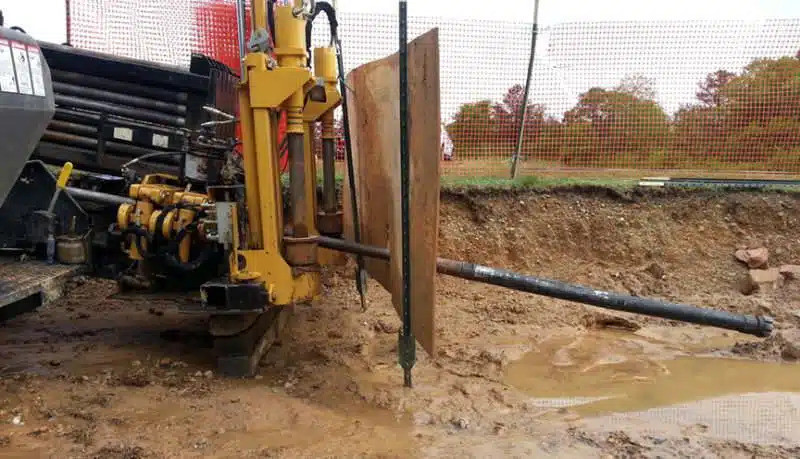Drilling through clay formations presents unique challenges, even for experienced drillers. With so many variables at play, preparation is key to success. Clay isn’t a uniform material—some types are easier to work with than others. Lean clays, which have low plasticity, typically drill, break down, and clear out without much trouble. Fatty clays, however, are another story. These highly plastic, sticky clays tend to swell when exposed to water, making them much more difficult to manage.
Don’t Rely on Detergents Alone
A common misconception is that detergents alone can prevent clay from sticking. While detergents help by lowering surface tension, they won’t stop fatty clays from absorbing water and expanding. This is where clay inhibitors come in. The right amount of inhibitor is essential to prevent swelling, maintain borehole integrity, and avoid a situation where the bore walls close in—shrinking the annulus and increasing the risk of a stuck pipe. The bottom line? Don’t cut corners on inhibitors. It’s always better to have them in your mix than to realize too late that you needed them.
Effective Mud Management: The Key to Success in Clay
One of the biggest factors in successfully drilling through clay is maintaining the right drilling or reaming speed and pumping an adequate volume of mud. A common mistake in the field is what we call “outrunning the mud”—when a driller moves too fast or pumps too little mud, failing to break down and remove cuttings effectively.
Here’s a crucial fact: Removing clay requires four to five times more water than removing sand or silt. That means drilling in clay demands higher mud volume and a slower advance rate. Many drillers attempt to conserve mud by lowering their GPM (gallons per minute), and in some soils, that strategy might work—but clay quickly proves otherwise. If you want to reduce GPM, you must slow down. If you want to maintain speed, you need to increase GPM. It’s a balancing act, and getting it wrong can lead to costly, time-consuming problems.
A Real-World Example: When Mud Management Goes Wrong
Here’s a case study that highlights the importance of proper mud management. On a recent job site, a crew had drilled a 6.5-inch pilot hole and was preparing to ream it to 14 inches. They were pumping 20 GPM and advancing at 1 minute per rod. However, calculations showed that to clean the borehole effectively, they should have been drilling at 3 minutes per rod. The result? Several inadvertent returns (IRs).
On the reaming pass, they maintained the same 20 GPM but slowed to 5 minutes per rod due to the increased hole size. Within a few rods, they lost returns. The problem? They weren’t pumping enough mud to clean the hole. To resolve the issue, we pulled out, restored flow, and adjusted their approach.
Using the DrilRite HDD app, we recalculated the optimal parameters. At 20 GPM, they would have needed to slow down to 13 minutes per rod. Instead, to improve efficiency, we increased their GPM to 40, allowing them to drill at 6 minutes per rod while maintaining full returns and properly cleaning the hole. The takeaway? Following best practices isn’t just about guidelines—it’s about avoiding expensive downtime and completing the job correctly the first time.
Work Smarter, Not Harder
Proper drilling techniques in clay formations save both time and resources. Cutting corners by reaming too quickly or using insufficient mud often leads to additional passes, stuck pipe, and ultimately higher costs in mud and labor. Taking the time to do the job right from the start leads to more efficient operations, fewer setbacks, and smoother project completion.
At Georgia Underground Superstore (GUS), we understand the challenges of drilling through tough clay formations, which is why we carry a full line of DrilRite drilling fluids to help you get the job done right. Our selection includes ClayRite and Sure Flow Clay, specially formulated to tackle sticky, swelling clays by enhancing borehole stability and optimizing drilling efficiency. Whether you need the right inhibitors to prevent swelling or high-performance additives to improve fluid flow, GUS has you covered with expert guidance and top-quality products ready to ship.
Find all DrilRite products here: https://georgiaunderground.net/drilrite/

